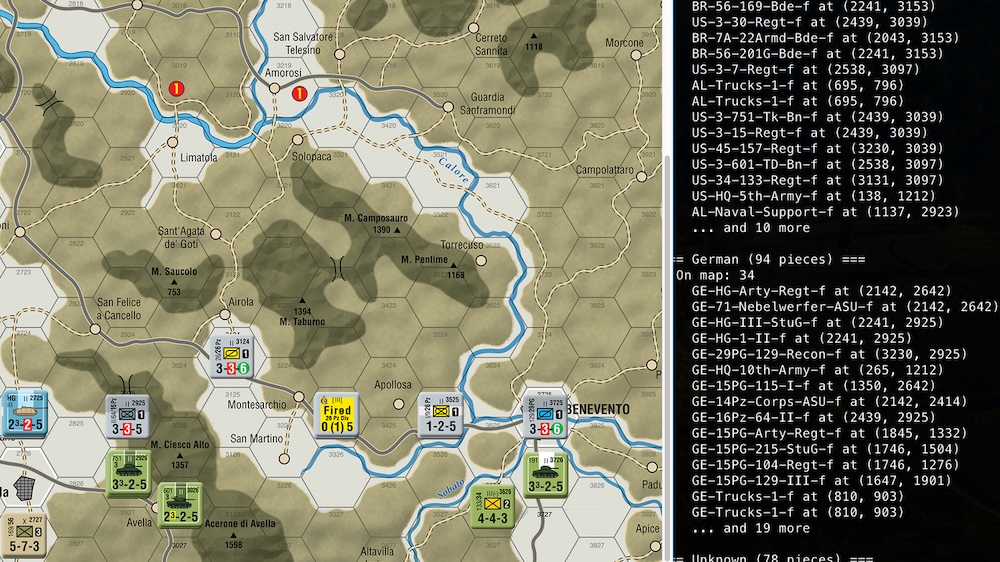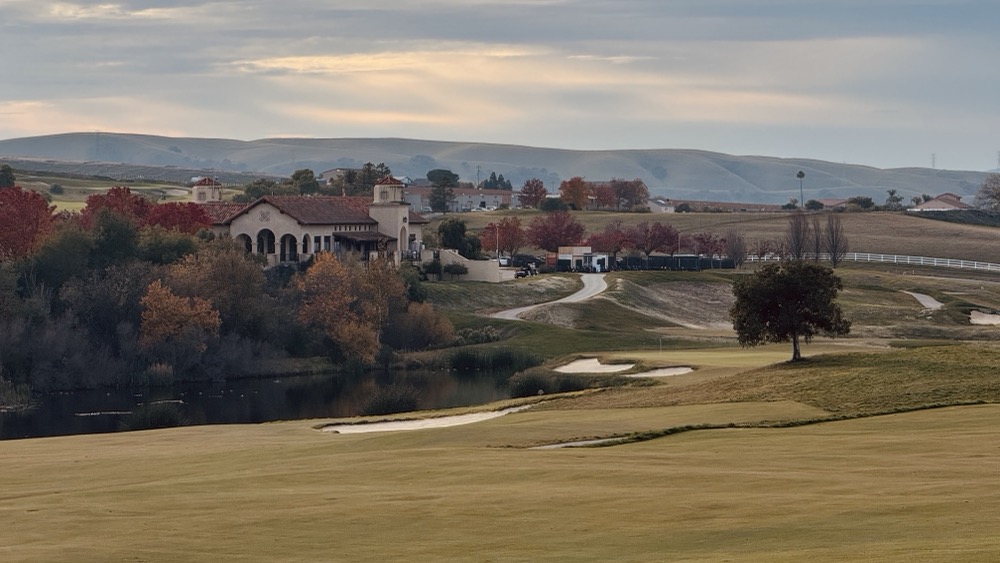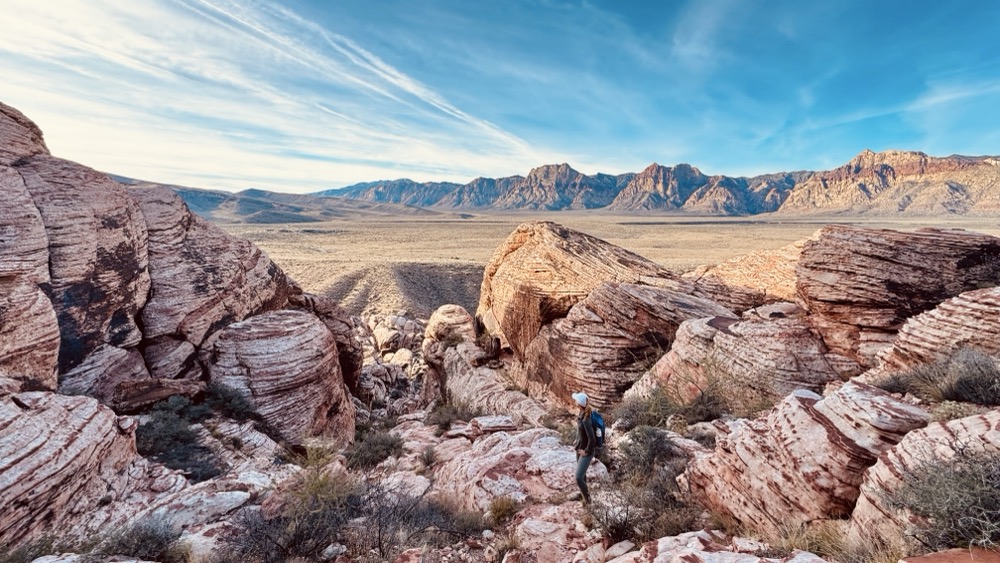Three Lionesses, Eight Cubs, and One Cape Buffalo
Our story ends with a tranquil scene of three lionesses with their eight (!) cubs (two of the lioness sisters are the mothers of the cubs) drinking from a small roadside pool. It began quite differently.
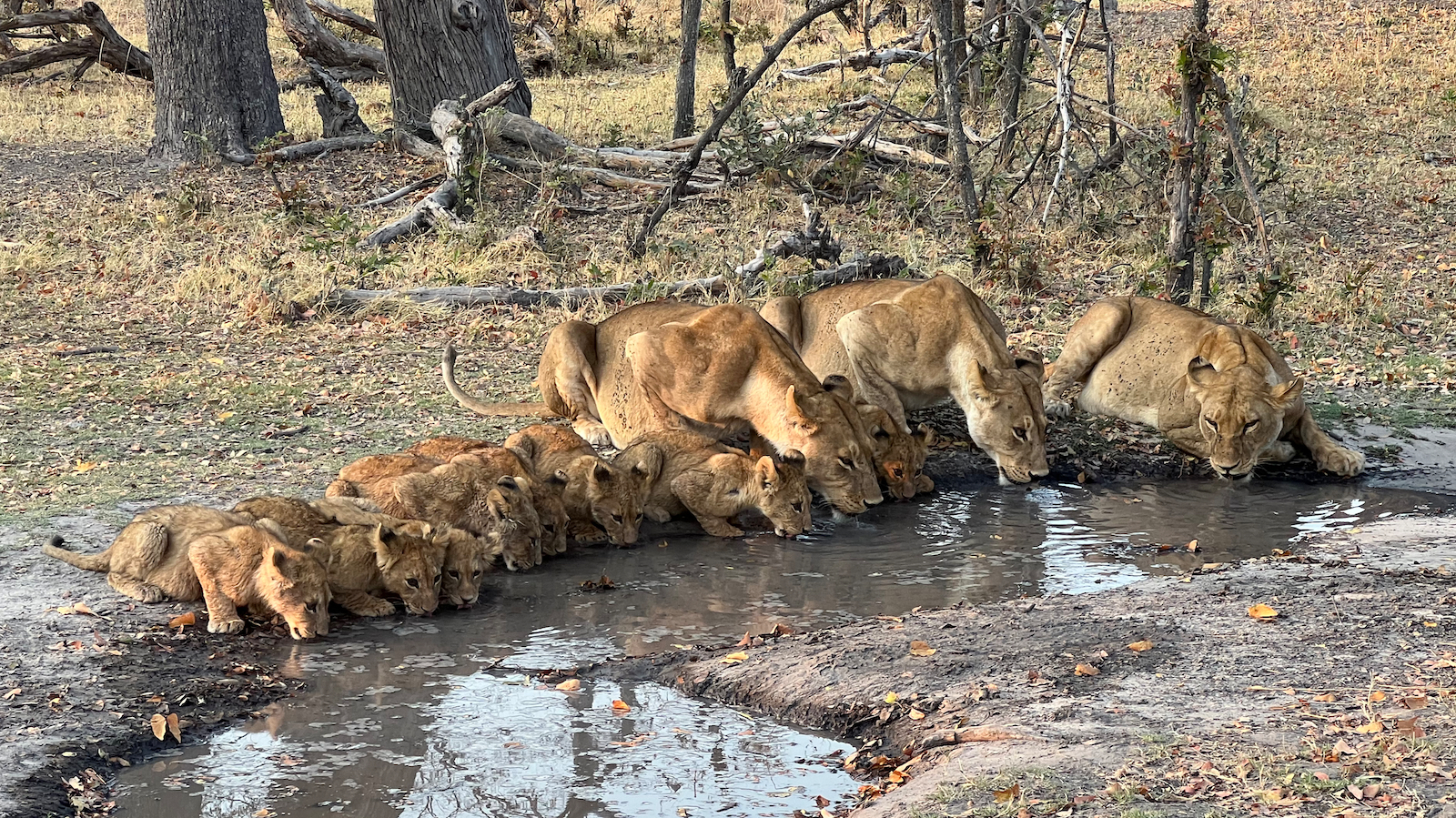 Lionesses and cubs drinking water
Lionesses and cubs drinking water
On our second day in Moremi Game Reserve we encountered a pride of lions: three mature lionesses with eight cubs. They were making a meal of a recently killed Cape buffalo. Our viewing started with one of the adult lions deep in the carcass, with the others relaxed and either resting or playful. And obviously stuffed from buffalo.
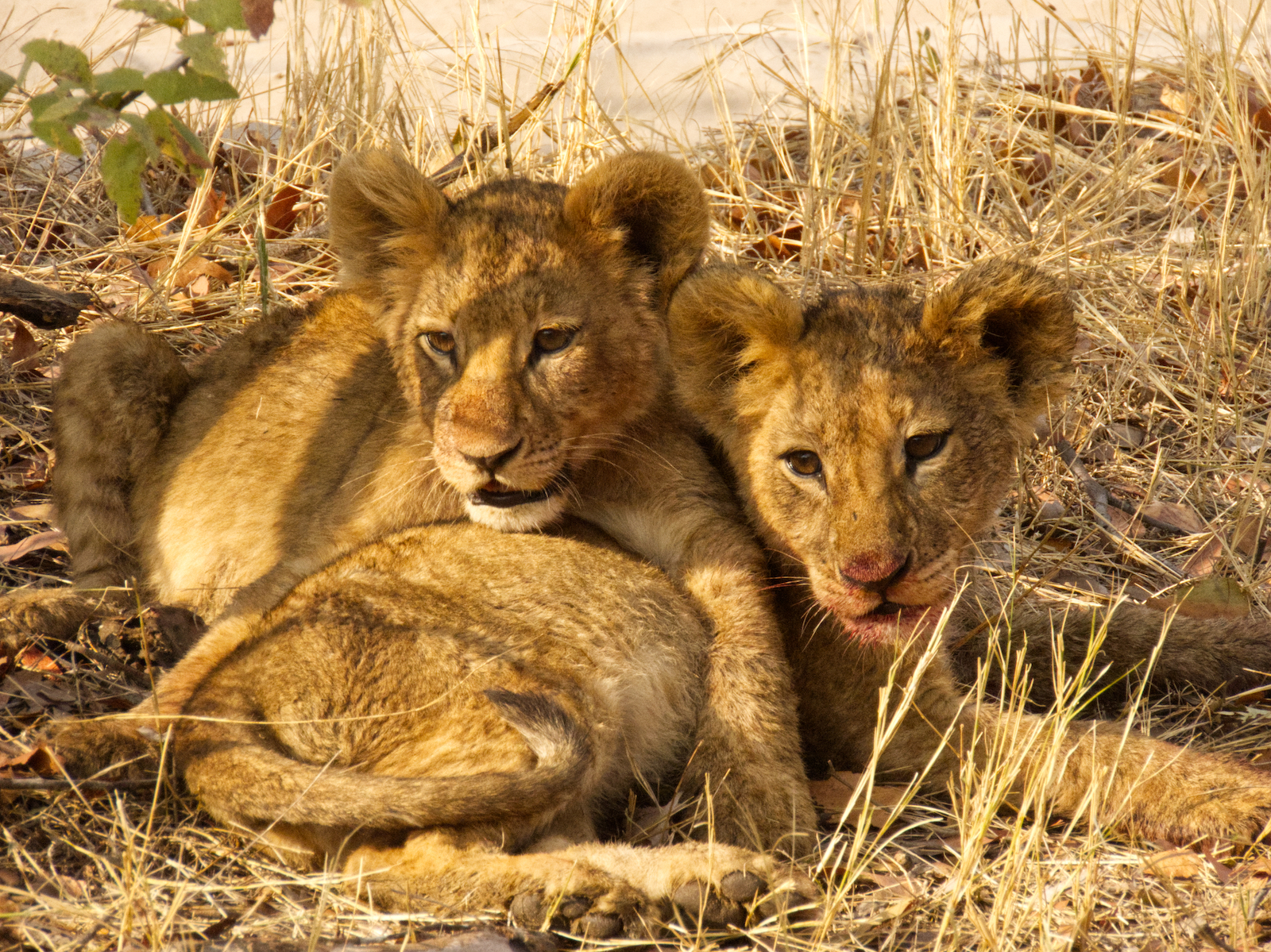 Two lion cubs resting and playing after eating buffalo
Two lion cubs resting and playing after eating buffalo
They started with the chest cavity and organs (minus guts and stomach we assume) but by the time we left the four legs were still intact. We knew the hind quarters would be an important source of food for the lions and would likely come next. There were some vultures and, somewhat surprisingly, black kites orbiting around hoping for a chance for a taste. We even saw some dive snatch-and-grabs from the kites on the carcass. Maybe we shouldn’t have been surprised:
Unlike others of the group, black kites are opportunistic hunters and are more likely to scavenge.
I should note that while I’m calling them black kites, it is probably more appropriate to call them yellow-billed kites as they may turn out to be a distinct species.
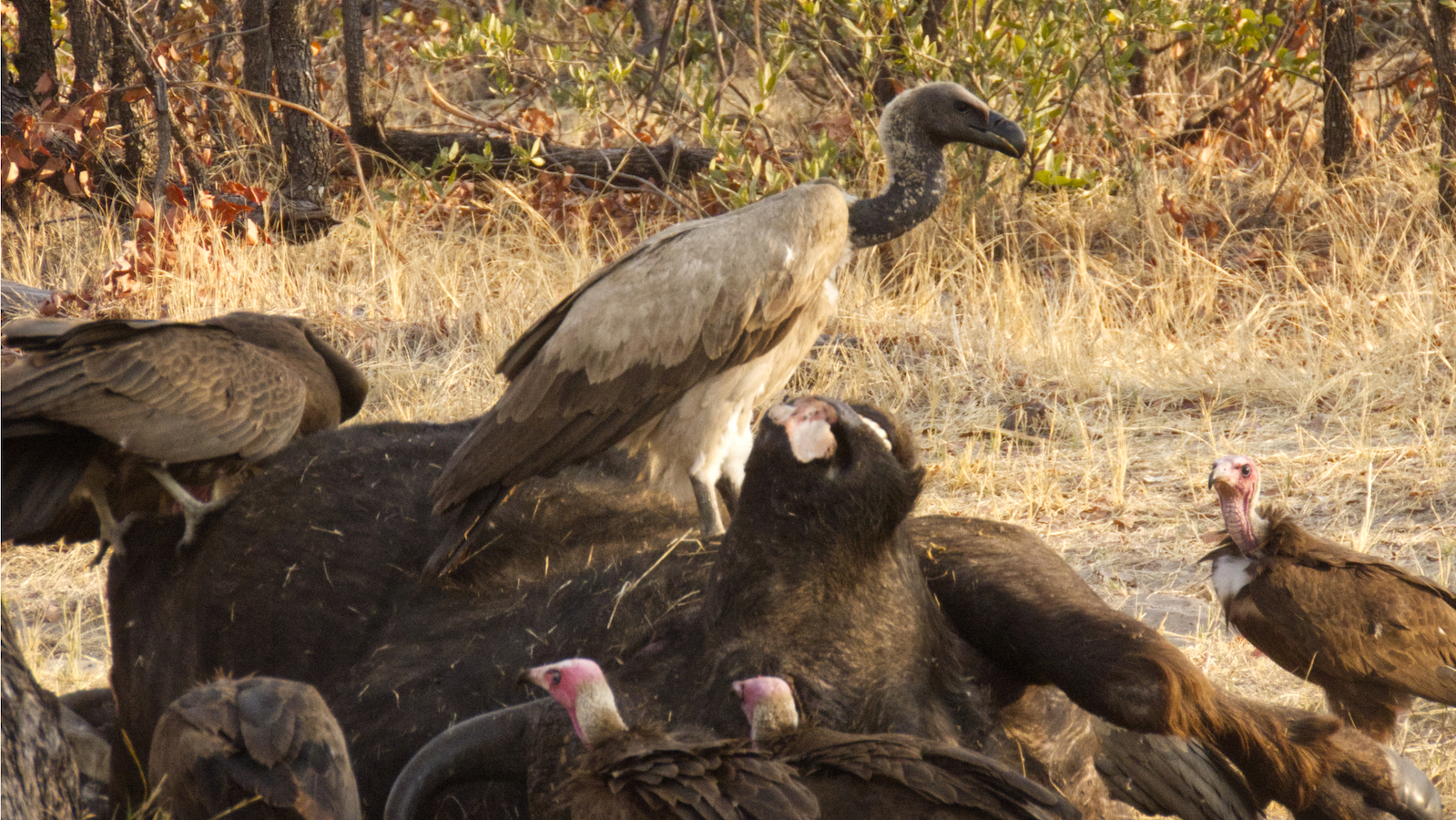 Vultures on the cape buffalo carcass
Vultures on the cape buffalo carcass
Our next morning started with tracking the lion group through our campsite and following them to the tiny watering hole where they all started drinking together. This may have been their first water encounter since the kill, as they were unlikely to abandon the buffalo until they finished the good parts.
As you can see we had a great glimpse into the aftermath. In a different locale it might have been hyenas going to town on the remains (and chomping the bones), but because of the preeminence of lions in this regions the hyenas have been suppressed. This in contrast to the start of our trip in Makuleke / Pafuri where the hyenas rule the school.
The hooded and white-backed vultures were not a surprise for us in the aftermath. The marabou stork was (but shouldn’t have been)!
It is sometimes called the “undertaker bird” due to its shape from behind: cloak-like wings and back, skinny white legs, and sometimes a large white mass of “hair”. It has the largest wingspan of any land bird, with an average of 2.6 metres (8.5 ft) and some recorded examples of up to 3.2 metres (10 ft).
I think we saw about 25 vultures around the buffalo, the majority being hooded vultures and a few of the white-backed.
 Lioness fully rested
Lioness fully rested
On our final morning drive this morning we found the lions again, this time one of the lionesses was laying in the middle of the road. She eventually shuffled over a bit and we got some great photos of her clearly in a very content state. They’ve fed their kids for a day or two and can take a breather before starting their next hunt.





